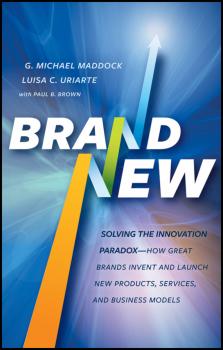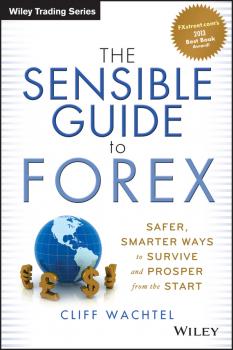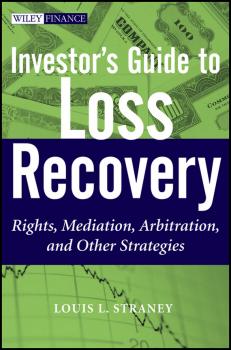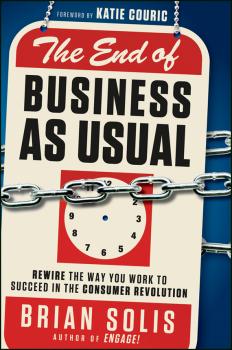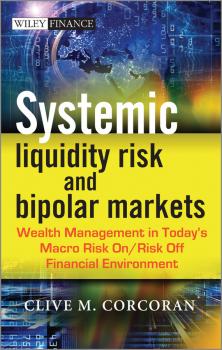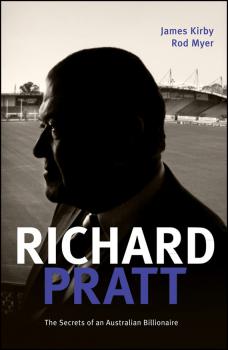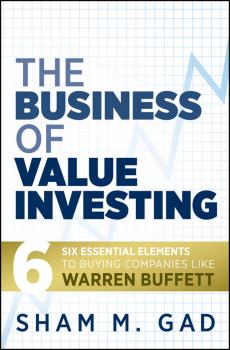ТОП просматриваемых книг сайта:
Зарубежная деловая литература
Различные книги в жанре Зарубежная деловая литература, доступные для чтения и скачиванияАннотация
The enduring legacy of a legendary investor Called the «greatest stock picker of the century» by Money magazine, legendary fund manager Sir John Templeton is remembered as one of the world's foremost investors, known for his pioneering insights and phenomenal investment performance over a professional career which spanned more than half a century. Templeton’s Way with Money provides a unique, professional 21st century appraisal of what made this formidable investor the success he was—and why his methods remain as valid today as they were during his long and successful lifetime. Written by two investment experts, one of whom worked closely with Sir John for ten years, and drawing on previously unpublished documents, the book explains in detail how John Templeton's simple but effective investment philosophy of riding out the ups and downs of the market cycle continues to be as relevant as ever for professional and private investors alike. Key features include: A fresh and detailed reappraisal, drawing on a number of previously unpublished documents, of the philosophy which Templeton applied to the two phase of his investment career—first as an investment counsel, and latterly as the most successful global fund manager of his generation A detailed and original study of the performance of the Templeton Growth Fund, demonstrating in detail how Templeton achieved the Holy Grail of investment—above average returns with below average risk First hand accounts from former colleagues of their experience in working with Templeton—including those of author Alasdair Nairn's ten-year career working with and for the investment management organization that was Templeton's life work Proprietary and original research which explains why Templeton's seemingly simple investment philosophy is sure to produce exceptional returns if implemented effectively Current market conditions make Templeton's contrarian investment method of profiting from pessimism particularly relevant today, and this book a must-read for anyone working with investments.
Brand New. Solving the Innovation Paradox -- How Great Brands Invent and Launch New Products, Services, and Business Models - Paul Brown B.
Аннотация
Brand New’s revolutionary innovation process is a proven road map you can put to work immediately to create successful new products, services, and business models. Written by leading innovation practitioners, and the coauthor of the bestseller Customers for Life, the authors of this tightly focused, highly entertaining book have nailed the issue perfectly when it comes to successfully introducing anything new. Research shows people like new products and services. Indeed they go out of their way to try to find them. Yet companies are truly terrible at providing new products and services that meet these customers’ needs. Why are companies so bad at giving customers what they want? Because they lack a simple proven process that makes sure innovation occurs efficiently time after time. No one knows this better than Mike Maddock and his team at Maddock Douglas, the Agency of Innovation,™ which has worked closely with more than a quarter of Fortune 100. To solve the innovation paradox, Maddock explains the process his team has used to help the world’s best companies and shows you how to Find needs and opportunity in the marketplace Come up with significant market insights Create compelling communication (using the actual words your customers use) to convince people to try your new creation What has worked for some of the world’s most successful companies, when it comes to innovation, will work for you. Start putting the lessons of Brand New to work for you…before the competition does.
Design Like Apple. Seven Principles For Creating Insanely Great Products, Services, and Experiences - John Edson
Аннотация
Implement the same principles that shaped Apple's approach to design Apple sees design as a tool for creating beautiful experiences that convey a point of view down to the smallest detail–îfrom the tactile feedback of keyboard to the out-of-the-box experience of an iPhone package. And all of these capabilities are founded in a deep and rich embrace of what it means to be a designer. Design Like Apple uncovers the lessons from Apple's unique approach to product creation, manufacturing, delivery, and customer experience. Offers behind-the-scenes stories from current and recent Apple insiders Draws on case studies from other companies that have mastered the creative application of design to create outrageous business results Delivers how-to lessons across design, marketing, and business strategy Bridging creativity and commerce, this book will show you to how to truly Design Like Apple.
The Sensible Guide to Forex. Safer, Smarter Ways to Survive and Prosper from the Start - Cliff Wachtel
Аннотация
FXstreet.Com’s 2013 Best Book Award! The Sensible Guide to Forex: Safer, Smarter Ways to Survive and Prosper from the Start is written for the risk averse, mainstream retail investor or trader seeking a more effective way to tap forex markets to improve returns and hedge currency risk. As the most widely held currencies are being devalued, they're taking your portfolio down with them—unless you're prepared. For traders, the book focuses on reducing the high risk, complexity, and time demands normally associated with forex trading. For long-term investors, it concentrates on how to hedge currency risk by diversifying portfolios into the strongest currencies for lower risk and higher capital gains and income. The usual forex materials don't provide practical answers for most retail traders or longer term investors. Virtually all forex trading materials focus on time-consuming, high-leverage, high-risk methods at which most traders fail. Materials about long-term investing in foreign assets rarely take into account the prospects of the related currency. A falling currency can turn an otherwise good investment into a bad one. Throughout the book, the emphasis is on planning and executing only low risk, high potential yield trades or investments and avoiding serious losses at all costs. Packed with richly illustrated examples every step of the way and including additional appendices and references to online resources, the book is the ultimate guide to forex for retail traders and investors seeking to tap forex markets for better currency diversification and income. Provides traders with safer, smarter, less complex and time-consuming ways to trade forex with higher odds of success. These include the use of such increasingly popular new instruments like forex binary options and social trading accounts that mimic expert traders. Shows investors how to identify the currencies most likely to hold or increase their value, and provides a wealth of ideas about how to apply that knowledge to a long-term, low-maintenance portfolio for both income and capital appreciation. Helps anyone seeking an asset class with low correlation to other markets by explaining how the very nature of forex markets means that regardless of market conditions there's always a playable trend somewhere, regardless of what other asset markets are doing, and how to find and exploit it for a short-term trade or a long-term investment in a currency pair, stock, bond, or other asset The Sensible Guide to Forex is only book that teaches mainstream risk averse investors and traders how to build a portfolio that’s diversified by currency exposure as well as by asset class and sector, via a variety of safer, simpler methods to suit different needs, risk tolerances, and levels of expertise. Written by Cliff Wachtel, a 30+ year financial market writer, advisor, and analyst, The Sensible Guide to Forex offers practical solutions to the above dilemmas faced by every serious, prudent investor. A must own for any informed investor-but don’t take out word for it – see advanced reviews at: http://thesensibleguidetoforex.com/review/
Investor's Guide to Loss Recovery. Rights, Mediation, Arbitration, and other Strategies - Louis Straney L.
Аннотация
Essential guidance for recovery of lost assets through arbitration, mediation and other forms of conflict resolution Since the discovery of the Madoff fraud and investment scandals associated with the global credit crisis, investors have become aware that they can fight back and demand both justice and monetary recovery. To date, the only reliable resources on securities arbitration have been either sensationalized accounts of how to sue Wall Street or legal references, which provide no practical application. Filled with expert guidance showing investors how arbitration works, Investor's Guide to Loss Recovery fills that gap by providing a focus on all of the investor's options when a conflict arises. Includes charts showing the major areas of litigation as well as empirical evidence of enhanced awareness of investment misconduct Proprietary research by the author, demonstrating arbitration results Analysis on how newly enacted regulatory reforms will impact the process and options for financial fraud victims Personal interviews with securities attorneys, experts and investors Detailed scripts of initial attorney interviews, mediation and arbitration New financial regulations are impacting the options available to investors looking to recover assets. Investor's Guide to Loss Recovery is must-have reading for every investor, financial advisor, and attorney.
The End of Business As Usual. Rewire the Way You Work to Succeed in the Consumer Revolution - Brian Solis
Аннотация
It's a new era of business and consumerism—and you play a role in defining it Today's biggest trends—the mobile web, social media, real-time—have produced a new consumer landscape. The End of Business As Usual explores this complex information revolution, how it has changed the future of business, media, and culture, and what you can do about it. «To be successful in business, you need to see what others don't. Start with this book. Someone's going to do it, why not you?» —Mark Cuban, owner of the Dallas Mavericks and Chairman of HDNet «Innovation has always changed the business landscape. People expect to access information anywhere, anytime, and on any device. Collaborative, cloud, and video technologies are leading this change. As Mr. Solis correctly writes, companies have to lead this change, not follow.» —John Chambers, CEO of Cisco Systems, Inc. «Winning the hearts and minds of customers with new media experiences will turn them into your most valuable sales force. Solis's book is the map to unleash this treasure.» —Peter Guber, author of Tell to Win: Connect, Persuade, and Triumph with the Hidden Power of Story «Your customers will share their experiences both good and bad. Now that everyone is connected, it's amplified and incredibly influential. This book will help you rethink your vision and mission to survive in a new era of digital Darwinism.» —Mark Burnett, Television Executive Producer
Systemic Liquidity Risk and Bipolar Markets. Wealth Management in Today's Macro Risk On / Risk Off Financial Environment - Clive Corcoran M.
Аннотация
The dramatic and well chronicled crisis of 2007/8 marked a watershed moment for all stakeholders in global capital markets. In the aftermath, financial markets have become even more tightly coupled as correlations in returns across multiple asset classes have been at historically elevated levels. Investors and fund managers are, to a much larger degree than previously and often much more than they realize, subject to the risk of severe wealth destruction. The ultimate hazard, which is not adequately characterized by the widely touted notion of tail risk, is the systemic risk which arises when liquidity in markets completely evaporates. Not only did this happen in the second half of 2008, but it has been repeated episodically since then – most notably in May 2010, in an incident known as the Flash Crash, and in the fall of 2011 when correlations were at historically elevated levels. Conventional asset allocation tools and techniques have failed to keep apace with the changing financial landscape which has emerged since 2008. In addition to the preponderance of algorithmic trading and the associated changes in the liquidity characteristics of financial markets, a new paradigm of risk on/risk off asset allocation has emerged. Risk on/risk off is a widely adopted style of trading and macro allocation strategy where positions are taken in several closely aligned asset classes depending on the prevailing sentiment or appetite for risk. The consequences of the day to day (and intraday) switching between either a risk on or risk off tactical strategies poses significant new challenges to investors who are still making investment decisions with outmoded notions from traditional asset allocation theory. How can one cushion the impact of systemically threatening events when the ability to exit financial instruments becomes almost non existent? How can one trust the integrity of financial models and orthodox macro financial theory which have become increasingly discredited? Can central bankers be relied upon to become the counter-parties of last resort and provide a safety net under the financial system? These vital questions, and many others, need to be addressed by everyone who has a stake in modern financial markets, and they are addressed in Systemic Liquidity Risk and Bipolar Markets. Proper functioning markets require fractiousness or divided opinion, and this needs to be lubricated by communications from central bankers, economic forecasters, corporate executives and so on. As long as such messages and market conditions remain ambiguous, providing asymmetric information to different market players, then the conditions are present to enable systemic liquidity to be preserved. Seen in this context the prevailing paradigm of bipolar risk on/risk off asset allocations is both a prerequisite to liquid markets, and also paradoxically, when one side of the polarity becomes too extreme, a major source of systemic instability. Should such polarities become critically unbalanced, and should the signals received by market players become symmetrically disadvantageous as they were in the fall of 2008, then an even more substantial systemic liquidity crisis than that seen in those troubled times is a dangerous possibility. Apart from the practical risk management tools and tactics that are recommended in Systemic Liquidity Risk and Bipolar Markets, there is a provocative and cogent narrative to provide anxious and perplexed investors with a coherent explanation of the post GFC financial environment, and which should assist them in navigating the choppy waters ahead.
Аннотация
Richard Pratt was one of Australia's most successful, formidable and charismatic businessmen. Yet for all this he was unfailingly human, his life playing out like a drama even after the final act. Self-made billionaire, family man, generous philanthropist, patron of the arts and Carlton Football Club saviour were just a few of Pratt's many guises, and in this compelling biography the truth behind the headlines is revealed. The twists and turns of Pratt's life are chronicled with candour – from humble beginnings in Poland to the heights of global business success tainted by the humiliating price-fixing scandal that earned Visy the largest corporate fine in Australia's history. Pratt's many achievements and controversies polarised public opinion but made him one of Australia's most enigmatic public figures. Though his legacy is debatable, no-one can deny that Richard Pratt was … one out of the box.
The Business of Value Investing. Six Essential Elements to Buying Companies Like Warren Buffett - Sham Gad M.
Аннотация
A blueprint to successful value investing Successful value investors have an ingrained mental framework through which all investments decisions are made. This framework, which stems from the father of value investing, Benjamin Graham-who believed that investment is most intelligent when it is most businesslike-can put you in a better position to improve the overall performance of your portfolio. Written by Sham Gad-founder of the Gad Partners Funds, a value-focused investment partnership inspired by the 1950s Buffett Partnerships-The Business of Value Investing effectively examines the fundamental tenants of this approach and skillfully illustrates the six essential elements of the entire process. Opening with some informative discussions of how value investing focuses more on buying a piece of a business, and less on buying a company's stock, this reliable resource quickly moves on to detail exactly what it takes to become a successful value investor. Outlines the six essential elements required for a successful risk averse value investment approach Contains case studies that illustrate how to approach investing in an intelligent, businesslike fashion Walks you through the pitfalls that most investors initially fall into With The Business of Value Investing as your guide, you'll quickly become familiar with one of the most effective investment strategies ever created.
Аннотация
A dynamic new way to understand intuition, already implemented around the world at top companies and business schools Neuroscience shows that instinct has a leading role in complex decision-making, yet imaginative play is the most direct means of activating our creativity and problem-solving abilities. Based on over 20 years of Cholle's wide-ranging professional experience and insights, The Intuitive Compass offers a fascinating new approach to innovative problem-solving, decision-making, and sustainable value creation. Through a concept known as Intuitive Intelligence, Cholle shows how anyone can improve creative brainpower by harnessing the balance between reason and instinct. Explores the tension between linear efficiency and random play, and the synergy between reason and instinct Helps us realize our natural tendencies to think holistically, think paradoxically, notice the unusual, or lead by influence Shows these tenets in action through case studies of the luxury house Hermes, Paris; Google and its paradoxical work culture; Virgin America, and its ability to notice the unusual about what matters for consumers and exert leadership in its industry The Intuitive Compass shows how to thrive within chaos and offers actionable information for reinventing our path to sustainable success.


